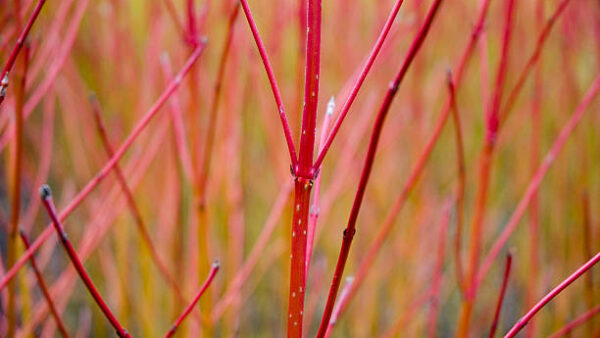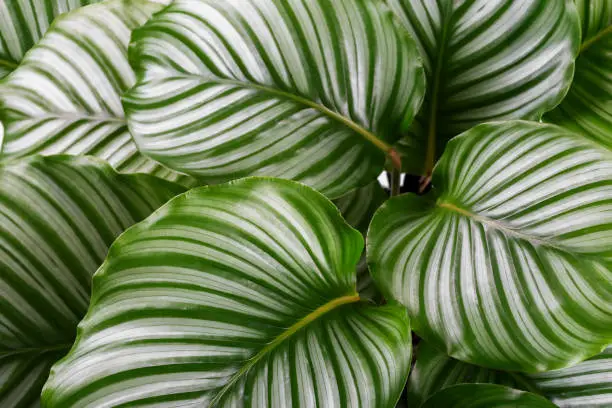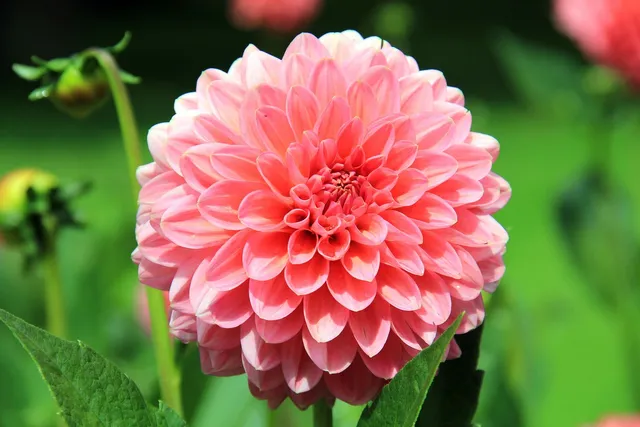The Vibrant Allure of the Red Twig Dogwood

Have you ever noticed a shrub that’s as lively in the cold winter months as it is in the warm, sunny days of summer? The vibrant charm of the red twig dogwood, a unique ornamental plant, captivates garden enthusiasts and horticulturists alike. This plant, known for its distinctive red bark, adds a pop of color to any landscape throughout the year.
In this article, we delve into the captivating world of the red twig dogwood, exploring its growth habits, year-round appeal, maintenance needs, and environmental benefits. So, read on and discover why this plant, known for its fiery, red bark and hearty resilience, deserves a special spot in your garden.
The Resplendent Red Twig Dogwood Shrub
Yellow stems and Partial Shade
Scientifically referred to as Cornus sericea, the red twig dogwood is a hardy, versatile shrub native to North America. This plant is a crowd favorite, cherished for its year-round visual appeal and relatively low maintenance needs.
In the spring and summer, the red twig dogwood sports a lush green foliage that transforms into a brilliant display of reds and purples in autumn. But it’s in the dead of winter that this plant truly shines. As its leaves drop, the vibrant red stems that give the shrub its name take center stage, brightening up the otherwise barren landscape.
Unraveling the Growth Habits of the Red Twig Dogwood
Red Twig Dogwood Shrubs
The red twig dogwood is a multi-stemmed shrub, typically growing between 6 to 9 feet tall, with a similar spread. This deciduous shrub thrives in USDA plant hardiness zones 2 through 7. It prefers moist, well-drained soils and can tolerate full sun to partial shade conditions. The red twig dogwood is also an excellent choice for wetland and riparian restoration projects due to its affinity for wet environments.
The Red Twig Dogwood: A Plant for All Seasons
Bright Yellow Stems and Creamy White Flowers
The allure of the red twig dogwood is its year-round beauty. The flat-topped white flower clusters bloom in late spring, attracting bees, butterflies, and other pollinators. The flowers give way to white berries by summer’s end, which are a favorite among birds and other wildlife.
As the cool autumn air sets in, the leaves shift to a fiery palette of reds and purples. Come winter, the stems reveal their stunning red hue, adding a striking contrast against the snow.
The Low-Maintenance Marvel
Red Twig Dogwood Care
What makes the red twig dogwood even more appealing is its minimal maintenance requirements. Regular pruning is necessary to encourage the growth of new stems, which bear the brightest colors. This should ideally be done in late winter or early spring before new growth begins.
Moreover, the red twig dogwood exhibits a strong resistance to most pests and diseases. It is a robust plant that can withstand challenging conditions, making it a perfect choice for both novice and experienced gardeners.
Planting the Red Twig Dogwood
Grow Red Twig Dogwood
When planting a red twig dogwood, ensure you choose a location that allows ample room for the plant’s mature size. Dig a hole twice as wide as the root ball and just as deep. Place the plant in the hole, ensuring the top of the root ball is level with the ground. Fill the hole, firm the soil, and water thoroughly.
Environmentally Conscious Gardening with the Red Twig Dogwood
Bright Red Stems in Winter Landscape
The red twig dogwood isn’t just a spectacle for the eyes; it’s also a friend to the environment. As a native species, it’s well adapted to local climates and conditions, making it a sustainable choice for environmentally conscious gardeners. It aids in soil stabilization, especially in riparian zones, preventing soil erosion and maintaining the health of water bodies.
Moreover, its flowers, fruits, and sheltering foliage serve as a valuable habitat and food source for local wildlife, including pollinators and birds. By planting a red twig dogwood, you’re contributing to the biodiversity of your local ecosystem.
The Ideal Companion Plants for Red Twig Dogwood
Cornus Sericea and Purple Berries
The red twig dogwood pairs well with a variety of other plants. Its vibrant stems create a stunning contrast against evergreens such as Spruce or Pine. In spring and summer, perennials like Black-Eyed Susan, Coneflower, or Daylily complement its lush green foliage. In autumn, the fiery hues of its leaves pair beautifully with the golden tones of ornamental grasses.
Where to Buy Red Twig Dogwoods
Red twig dogwoods are widely available at local nurseries, garden centers, and online plant retailers. When purchasing, look for healthy plants with vibrant stems and robust root systems. Opt for native or cultivar varieties, such as ‘Cardinal’ or ‘Baileyi’, known for their particularly bright red winter stems.
Conclusion
The red twig dogwood offers an unmatched blend of beauty, resilience, and versatility. Whether you’re a landscape designer seeking a vibrant, year-round focal point or a homeowner looking to enhance your garden’s aesthetic, the red twig dogwood is a compelling choice. This fascinating plant, with its hardy nature and striking color, truly makes every season a spectacle to behold.
When you choose the red twig dogwood, you’re not just selecting a plant; you’re adopting a year-round companion that will brighten your garden and your spirits, irrespective of the season. So, why wait any longer? Add the red twig dogwood to your garden today and watch your landscape transform with its year-round color show.




